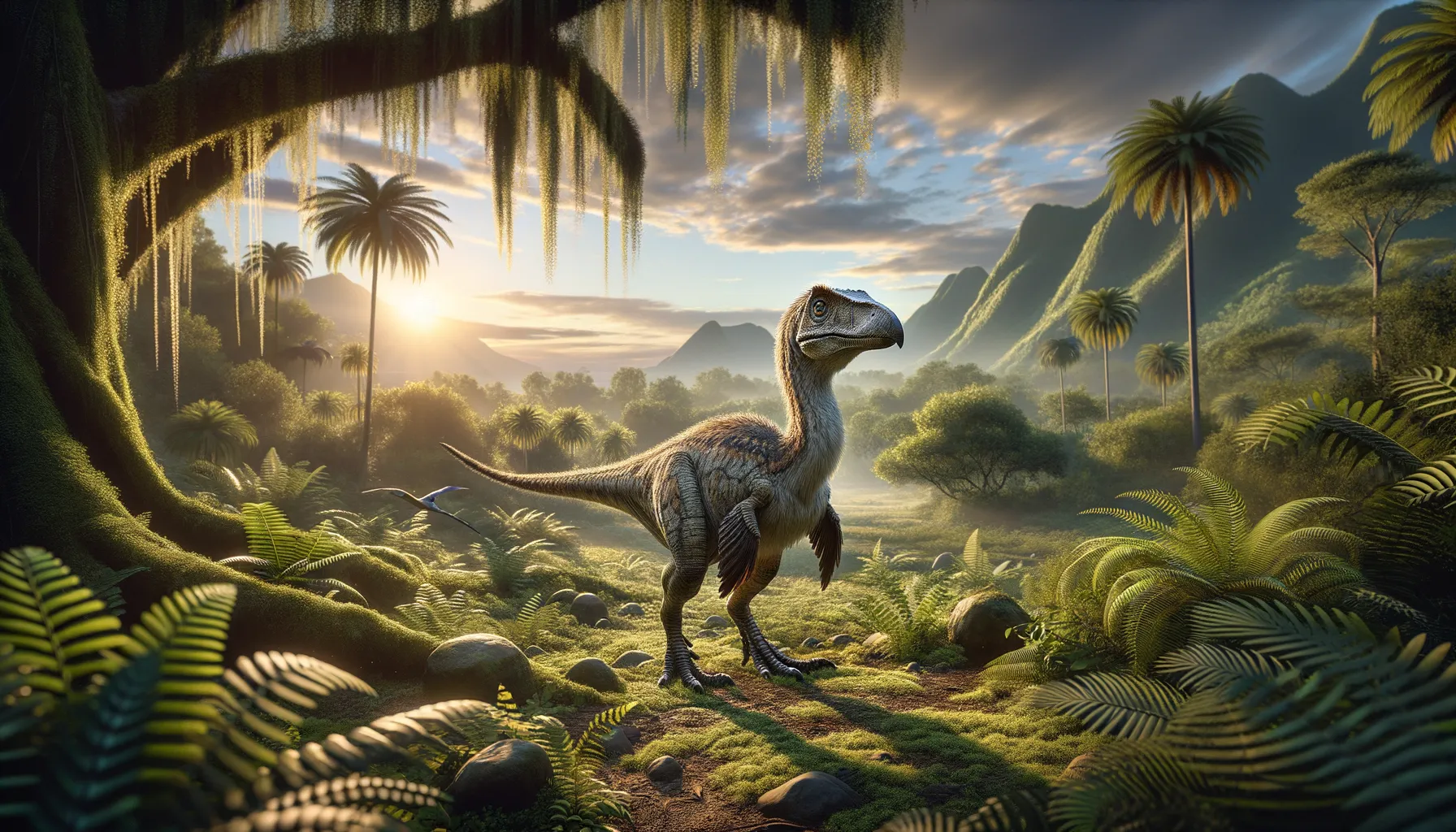
Avisaurus
Flighty survivor of the Cretaceous skies!
Period
Cretaceous
Length
Approximately 0.5 to 1 meter long.
Height
Small-sized, comparable to a medium bird.
Weight
Estimated to weigh around several kilograms.
Avisaurus was one of the last enantiornithine birds, living during the Late Cretaceous period. This small bird-like dinosaur is significant due to its adaptation to a range of environments, hinting at diverse behaviors and lifestyles. Fossils indicate that it lived alongside some of the most iconic dinosaurs, offering valuable insights into ecosystem dynamics before the mass extinction event at the end of the Cretaceous.
Diet
Avisaurus likely fed on small insects and other invertebrates. Its sharp beak and agile flight suggest it could catch prey on the wing or forage efficiently on the ground.
Hunting
This bird-like dinosaur probably hunted using quick, darting flights, taking advantage of its speed and agility. Its keen eyesight might have helped locate prey from a distance before swooping to capture it.
Environmental challenges
During the Cretaceous period, Avisaurus faced rapidly changing environments as sea levels rose and fell. Volcanic activity and shifting climates likely affected its habitat, requiring adaptability. These factors, combined with predation from larger animals, posed constant survival challenges.
Speed
Likely swift and agile in flight.
Lifespan
Unknown, typical for smaller birds.
First discovery
First discovered in the 1980s in North America.
Fun Facts
- Avisaurus was a prehistoric bird-like dinosaur that lived approximately 75 million years ago during the late Cretaceous period.
- Despite its name meaning 'bird lizard,' Avisaurus was not a true bird but had bird-like features, suggesting it was an early relative of modern birds.
- Fossils of Avisaurus were first discovered in North America, particularly in the region that is now known as the western United States.
- Avisaurus is believed to have been a small to medium-sized dinosaur, possibly comparable to modern birds in size.
- One of the distinguishing features of Avisaurus is its lightweight skeleton, which suggests it might have been capable of flight or at least gliding.
- The name Avisaurus was given because of the bird-like characteristics, even though its exact relationship to birds is still a subject of scientific study.
- Avisaurus was part of a larger group of bird-like dinosaurs, indicating that during its time, there was a rich diversity of avian-like species.
Growth and Development
Avisaurus would have developed relatively quickly, reaching maturity in just a few years like modern birds. Its growth stages might have mirrored those of small modern birds, with hatchlings rapidly fledging. Such quick development reduced vulnerability to predators.
Habitat
Avisaurus inhabited forested areas, shrublands, and possibly wetlands. These environments provided ample cover and food resources. Its adaptability allowed it to thrive in a variety of ecological niches.
Interaction with other species
Avisaurus lived alongside a diverse range of species, from small lizards to enormous dinosaurs. It shared its environment with various predators and competitors, which influenced its adaptations. Coexistence with other avian-like dinosaurs demands a niche specialization for survival.
Natural lifespan
Avisaurus potentially lived for several years, similar to other small birds.
Reproduction
Reproduction in Avisaurus likely involved laying eggs and nesting in protected areas. Like many birds, it might have exhibited some level of parental care, ensuring the safety and growth of its offspring.
Social behaviour
Avisaurus was likely somewhat social, living in small groups or pairs. Such behavior could enhance foraging efficiency and offer protection from predators. Vocal communication might have played a role in maintaining group cohesion.
Fossil locations
Fossils of Avisaurus have been found in North America, particularly in the western United States. These fossil sites provide crucial data on the bird’s morphology and ecological role during the Cretaceous period.
